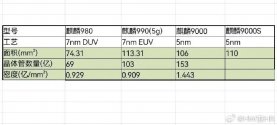Ssa800 was not involved in making of Kirin 9000s based on all the legit industry insiders that have commented on this forum and on zhihuWell, SMEE hadn't announced their SA800 yet. So the way I see it, the upcoming announcement could be about that. And the implication is that the SA800 is already producing the Kirin 9000s. It only really said there's more to come after the 9000s and to get ready for surprises.
The SA800 may not surprise any of us, because we'll we've been following this like flies on honey. But I think most of the world would be shocked by a 28nm DUVi.
Let's wait for Kirin 9100 to determine.This is insanely speculative of my part but if Huawei and SMIC are patterning finfet transistors using EUV Free Electron Lasers or SSMB that would the bombshell of the century, it will flip the entire semiconductor industry.
If first Kirin 9000s was tested out at end of 2020, that's way too early of timeline for this. Even if good chunk of the chips were fabbed in 2022, euv wouldn't really work from timeline point of view
As for surprises, have people considered that Kirin a2 on 14nm process coming out would be another nice surprise? there are more also.they make plenty of progress without euvs


